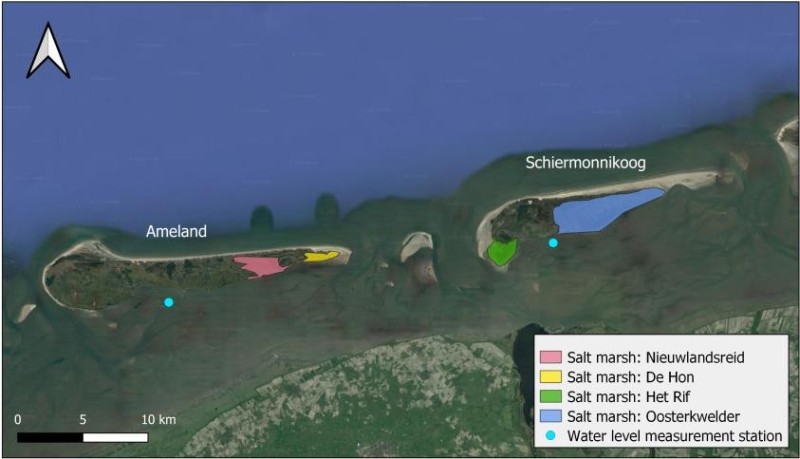M. Bonenkamp1,2*, Y. Huismans1,2, Z.B. Wang1,2
1 Delft University of Technology; 2 Deltares
*corresponding author: This email address is being protected from spambots. You need JavaScript enabled to view it.
A rise in the global mean temperature induced by climate change is expected to have a large impact on ecosystems in all regions of the world. One of the threats is the accelerated sea level rise (SLR). This may induce partial loss of intertidal areas, which are important feeding ground birds (Huismans et al., 2022). The long-term morphological response of tidal inlet systems can be modelled using the reduced complexity model ASMITA (Aggregated Scale Morphological Interaction between Tidal inlets and the Adjacent coast) (Stive et al., 1998). The ASMITA model simulates morphological development on an aggregated spatial and temporal scale by imposing a morphological equilibrium condition. As such the model is fast, allowing for multiple long-term simulations. The model parameters represent real world processes and can be related to field values.
Currently, salt marshes are not implemented in ASMITA. However, salt marshes may be of vital importance to the morphological development in tidal basins and estuaries. This research aims to investigate how salt marshes can be implemented in ASMITA and to what extent salt marsh development can be simulated by ASMITA.
The governing processes for salt marsh development in ASMITA are sedimentation and relative sea level rise (rSLR), which includes deep subsidence and SLR. A data analysis for the Dutch barrier islands Ameland and Schiermonnikoog indicates that salt marshes experience sedimentation rates between ~
0.10 – 1.0 [cm/year], depending on the location where measurements were taken. In the first implementation of salt marshes in ASMITA, the sedimentation is related to the amount of water that flows onto the salt marsh and the Suspended Sediment Concentration (SSC). The amount of sedimentation is computed by an aggregated version of the advection-diffusion equation. The first results indicate that ASMITA is able to simulate the morphological development of salt marshes. In a follow-up step, we are carrying out further research into the parameter setting and an additional model extension.

Figure 1: An overview of the salt marshes on Ameland and Schiermonnikoog that were studied for model validation.
References
Huismans, Y., van der Spek, A., Lodder, Q., Zijlstra, R., Elias, E., & Wang, Z. B. (2022). Development of intertidal flats in the Dutch Wadden Sea in response to a rising sea level: Spatial differentiation and sensitivity to the rate of sea level rise. Ocean & Coastal Management, 216, 105969.
Stive, M., Wang, Z., Ruol, P., & Buijsman, M. (1998). Morphodynamics of a tidal lagoon and adjacent coast. 8th International Biennial Conference on Physics of Estuaries and coastal Seas, The Hague, the Netherlands, 1998.










